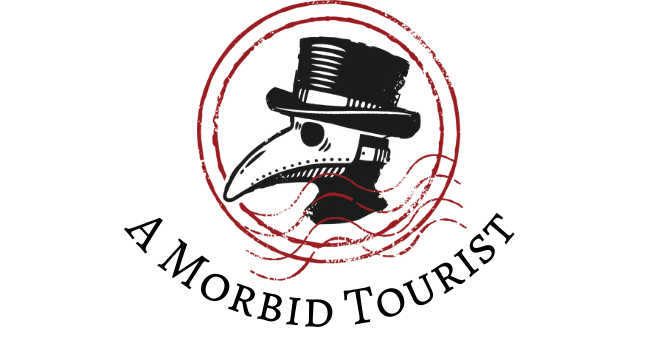A Funeral,
From the Director's POV
Probably unsurprisingly, I was a creepy child. When I was 2, I accidentally saw the video for Michael Jackson’s Thriller. Instead of being terrified, Mum said that I laughed and laughed and made her play it repeatedly until I knew the dance (and the VHS tape had burned out).
At the age of 7, I asked to have a coffin instead of a bed. I watched The Sixth Sense when I was 8 (BAD IDEA). Mona the Vampire was one of my favourite cartoons, I asked endless questions about death, and I’ve always loved a good graveyard.
Funerary Interests
So naturally, I’ve always had a morbid fascination with funerals. The ceremonies, both secular and religious. The rituals. How funerary practices differ around the world. All aspects of death are interesting to me, but I especially like to learn the cultural ideas behind funeral traditions. I was devastated when I found out I’d probably never get to have a Tibetan Sky Burial, which would be my preferred send-off.
I decided that if I couldn’t make it as a writer, I wanted to be a mortician or something similar – which was no surprise at all to my family. In fact, my Uncle had the same ambition when he was a kid. There’s also the aunt who used to wear an actual death shroud as everyday clothing. And of course my Nan, who – at her late husband’s funeral – dragged me over to the funeral director to introduce me and tell him how much I’d love to get into the industry.
Yep, my family were supportive!
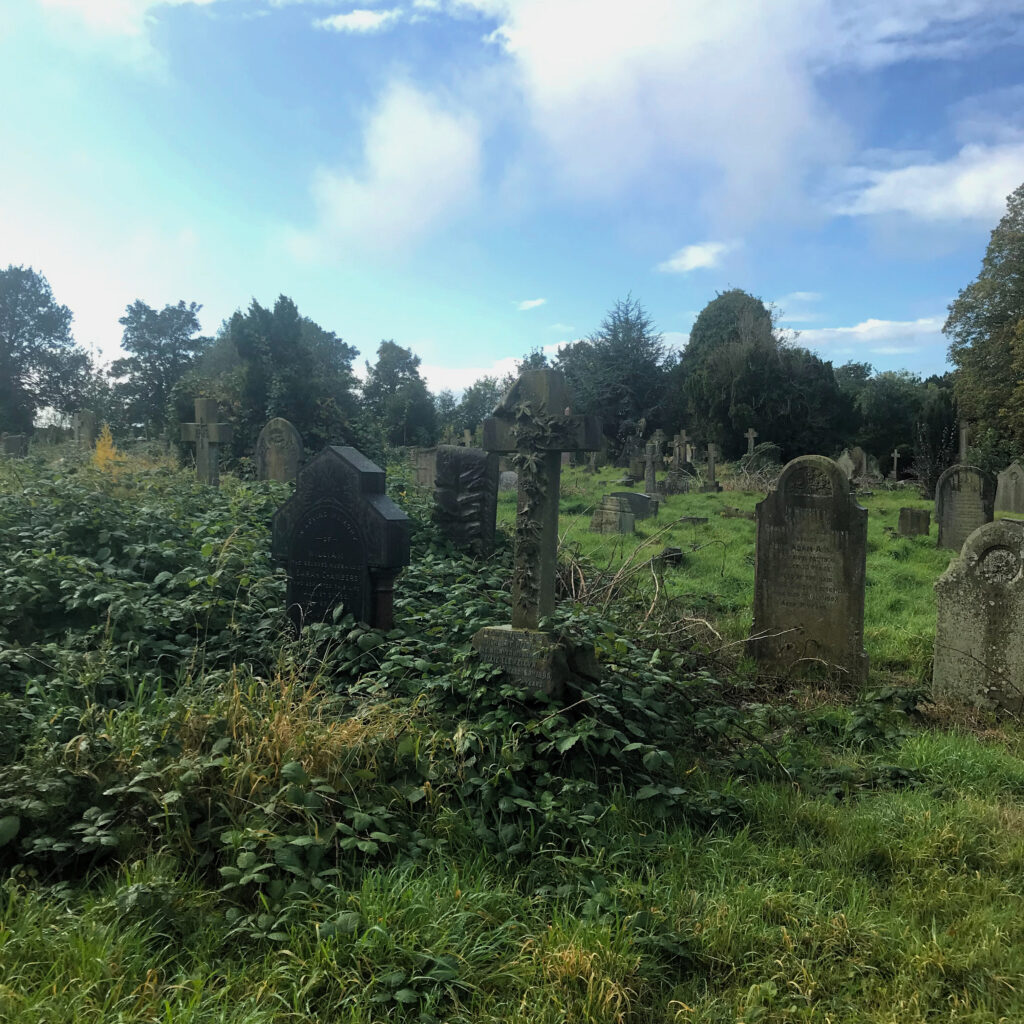
The industry isn’t an easy one to get into, however. In the UK, the majority of funeral homes are still family-run (and those are usually the best ones). Unless you can afford to do the schooling, working from the ground up is nigh impossible for people who aren’t already involved. I’ve regularly gotten in touch with my local funeral homes in the past, to ask about volunteering or work opportunities and haven’t had much luck.
A lot of people consider this line of work, and people who want to work in it, weird. I disagree. I think it’s the last kind thing you can do for somebody – to look after their grieving family and make sure they get laid to rest with respect and care.
The Local Undertakers
(Editor’s Note: I won’t be naming any specific names in this post, out of respect for the deceased’s privacy and my funeral home friends’ business – I’ll use initials instead)
A while back now, I contacted a local place that had been recommended to me, run by a married couple (J and K). They were very friendly, and told me to come in and have a chat. There wasn’t any work for me at that time, but they were happy to talk about the industry and my interest in it. They are two open-hearted people who are so easy to speak to. I was immediately put at ease and spent an hour in their Arrangement Room, having an interesting and illuminating conversation. By the time I left, I adored them both.
Their little company is the best example of a funeral home. Run by a small, close-knit group who trust and love each other 100%, and a real pillar of the community. Everyone I mentioned this particular place to immediately gushed about their unwavering support at all hours, during the process and even long after. I’ve heard that they have delayed, contributed to, or even waived costs for people who are financially struggling after a loss. Just truly good people, in it for all the right reasons. J mentioned glibly that he probably ought to have retired by now, and that you certainly don’t get into this line of work for the money, but that they simply cannot stop yet. Not while they’re still able.
Both J and K make it a point to interact with their local area, and to follow up with all of the mourners they’ve worked with. Everything they do is done with deep respect and care. People are very, very fond of them.

© Paul Walsh Funerals
At the end of our conversation, they unanimously invited me to come along to a funeral with them! Just to see how it works from the director’s point of view. They said that they could tell I was a kindred spirit and had the right constitution for the work. Obviously there was absolutely no way I was going to miss this, and I gratefully accepted. J even joked: “That’ll be something to write about!” Well, quite.
The ‘Departure Lounge’
I arrived at the funeral home with ‘first day of work’ jitters, despite this not being a job. The first new person I met was C, one of the pallbearers. He was really nice and easy to chat to, and would be my main ‘buddy’ while J and K were busy. We went with J into the ‘departure lounge’, as he amusingly called it. This was where the subject of the funeral was currently resting, already prepared and closed in the casket. She was an elderly lady who had passed away following an illness. I said a quiet hello to her when I came in. It was a bit weird being in the back room (felt a bit out-of-bounds!), but very interesting.
Caskets always look so ornate and solid, but today I learned they’re mostly MDF with a fancier outer shell. This is to help lower costs – a solid wood casket would be spenny, not to mention too heavy to carry. By the way, the difference between caskets and coffins is simple. Caskets are rectangular in shape and, I think, look more modern and sleek. Coffins are the ones that probably first come to mind, with the traditional tapered shape (think Dracula’s coffin). Be aware that I do use the words interchangeably in this post, I’m sorry!
There was also a beautifully painted cardboard casket, touted as more eco-friendly and often used in cremations. J invited me to try to lift this one and it was surprisingly easy, considering it was occupied at the time. On looking for cardboard coffins online while I was writing this post, I found out there’s a Compare the Coffin website and that’s HILARIOUS to me for some reason. It’s like Compare the Market, but macabre.
I also got to see the huge fridge that stores bodies, and a really cool hydraulic device, called a body hoist, that’s used to move taller or heavier people around. J said he usually just moves them himself otherwise – wow!
The First Body
That morning was also the first time I’d seen a Real Dead Body. It wasn’t the lady whose funeral it was – almost all of the plume screws on her casket had been drilled down already. J finished that off when we went into the ‘departure lounge’. I’d asked what her coffin was made of, and he wanted to show me the inside of one. This was so I could see how the fancy exterior differs from the more simple material inside.
He went over to another, longer coffin and said, “Are you ok with people?” I wondered whether to answer honestly – that people can be frightening and irritating, but I can manage. But then he added, “Because I’m about to open this lid.” With a start I said, “Oh! I thought you were talking about live people!” and J said that you should never be ok with those, they’re always the ones you should watch out for. I hooted with laughter, then said I was cool with dead people.
So he opened the casket.
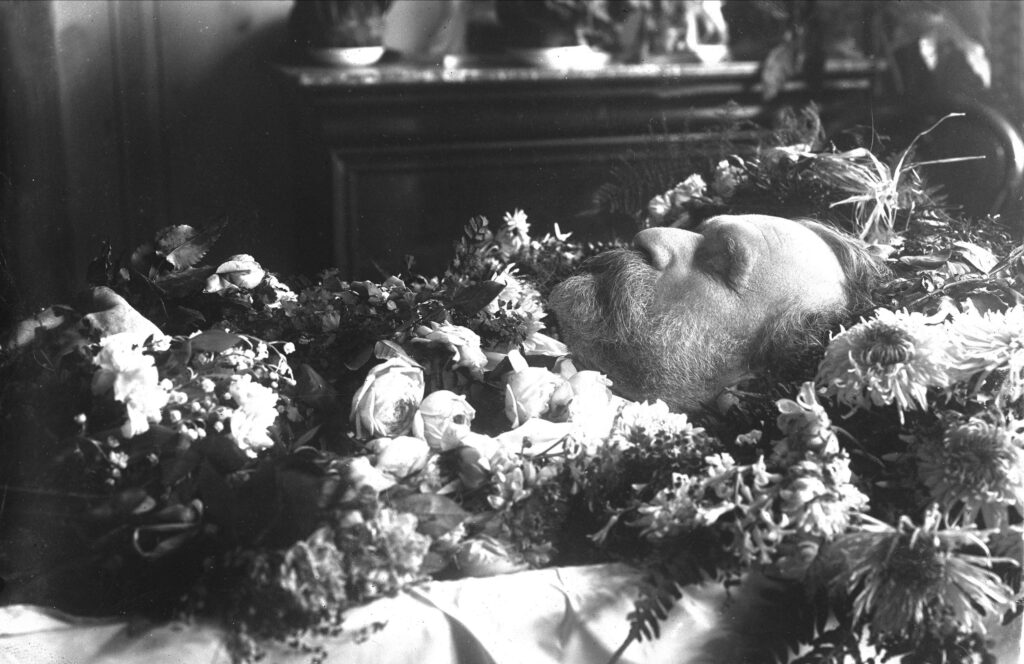
© Gustav Borgen, Norsk Folkemuseum
Inside was an older gentleman, nicely dressed, a small photograph clutched in his crossed hands. The only things that were ‘off’ about him were the slightly waxen appearance of his skin, and a light bruise above one eyebrow. Otherwise he looked beautiful, completely peaceful and at rest.
J told me his name and I said good morning to him, and thanked him for letting me peek inside. This got an approving smile from J. He said that he’s always chatting to his clients, and thinks every good funeral worker should. He especially makes sure to say hello when he arrives in the morning, and goodbye when he leaves at the end of the day. I regularly speak to inanimate objects, so extending that to human cadavers wasn’t difficult and didn’t feel weird at all.
To be honest, I did wonder how I’d react to a real-life body. I always imagined I’d be alright. I’ve seen so many photographs of them, being interested in forensic pathology and post-mortem photography. But it’s never going to be the same as actually seeing one in front of you. It was surreal, but not at all scary.
Actually, I think they were surprised to hear that it was my first body. C said “Oh, well done!” with a grin and J said I handled it like a pro. It did make me glow a bit.
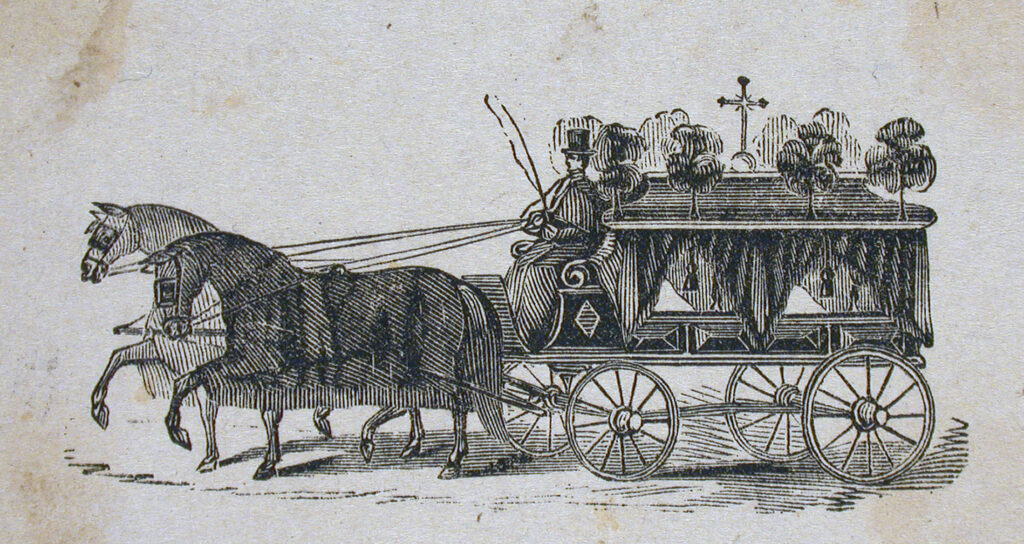
© John Henry Walker, McCord Stewart Museum
Before everything kicked off, I met two more pallbearers. One of whom does Motown DJing at the weekend, which I found hilarious in juxtaposition to his day job. When we were ready, they carefully loaded the coffin into the hearse. It was interesting to see how it’s secured, as it’s something I’ve wondered about for years – it always looks like the coffin is just sat there with no restraints.
They arranged the flowers on top and we all bowed deeply. At this point, we didn’t have an audience, it’s just what they do at this funeral home (and I imagine many more) out of respect for the deceased. It was our little moment to send her our love before going to meet her family.
Funeral March
Being the main director for all of their funerals, K was in her top hat and tails and looked so smart. Honestly, I wish I could dress like a funeral director every day. The hearse and limousine were really clean and shiny (J washes and polishes them himself!), and I got to ride in the ‘bearer seat’ in the hearse! Until that day, I wasn’t even aware they existed. Hearses usually have two, tucked into little nooks on either side of the raised platform that the casket rests on.
I was taught to stand next to my car door, and wait for the signal (K stands in front of the hearse and bows again) before getting in. She led us out onto the next road at a slow walk – this is done as another respectful gesture to the decedent. Once we were on the busier road, she then got into the passenger seat of the hearse.
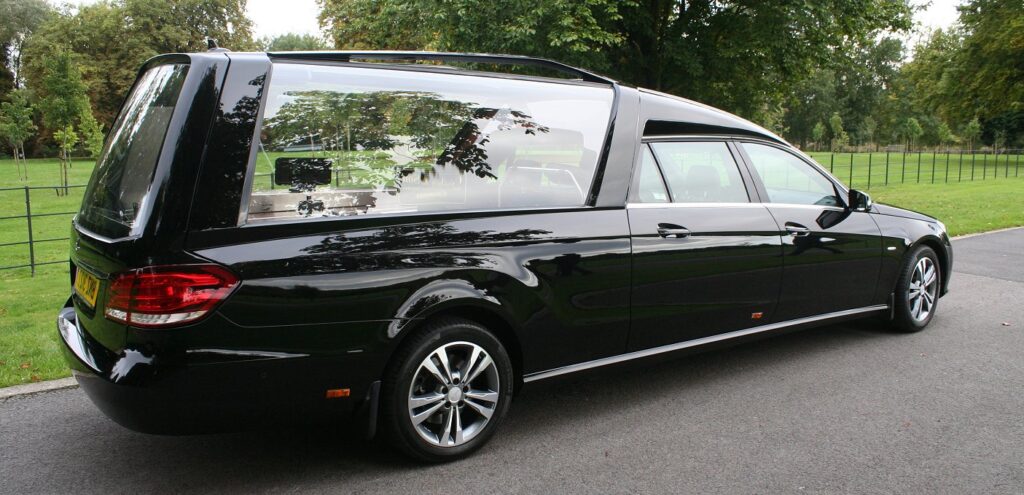
© Blackwells
J suddenly said, “Would you like a sweetie?” At first, I didn’t register what he’d said as it was so ODD. Then he waved a roll of Trebor Softmints over his shoulder, where I was perched on my bearer seat. I don’t like to use the word ‘surreal’ too much but sitting next to an occupied coffin in a hearse and eating sweets was just that.
We drove out to the home of the ‘head mourner’ (another phrase I didn’t know until today), the deceased’s daughter. J, C and I got out and stood next to our doors while K went and greeted the family. She was brilliant – I could see the family visibly relaxing as K took gentle charge and ushered them to the limousine.
Once everyone was situated, she led us back out of the street. During this, J was pointing to all of the houses they had helped someone at – there were quite a few! When we got to the main road again, and K was safely back in the hearse, we set off properly for the crematorium.
The Funeral Ceremony
When we got there, I was instructed to stand at a respectable distance in front of the chapel so I could see J and the bearers unload the coffin and walk it into the chapel, led by K. I respectfully bowed when they did, too, so I didn’t look really random and out of place. The family followed the coffin, and I slunk in at a reasonable distance. I concentrated on keeping a slow, dignified pace (a feat for me because I usually walk with rapid, terrible purpose).
I placed myself discreetly at the back near the door and watched the bearers bring the coffin to the catafalque. It was a really nice, respectful process. All four of them placed a hand upon the coffin until K had again bowed, and then they all joined in (so did I, even though no one could see me). I followed them when they filed back out, and could finally exhale.
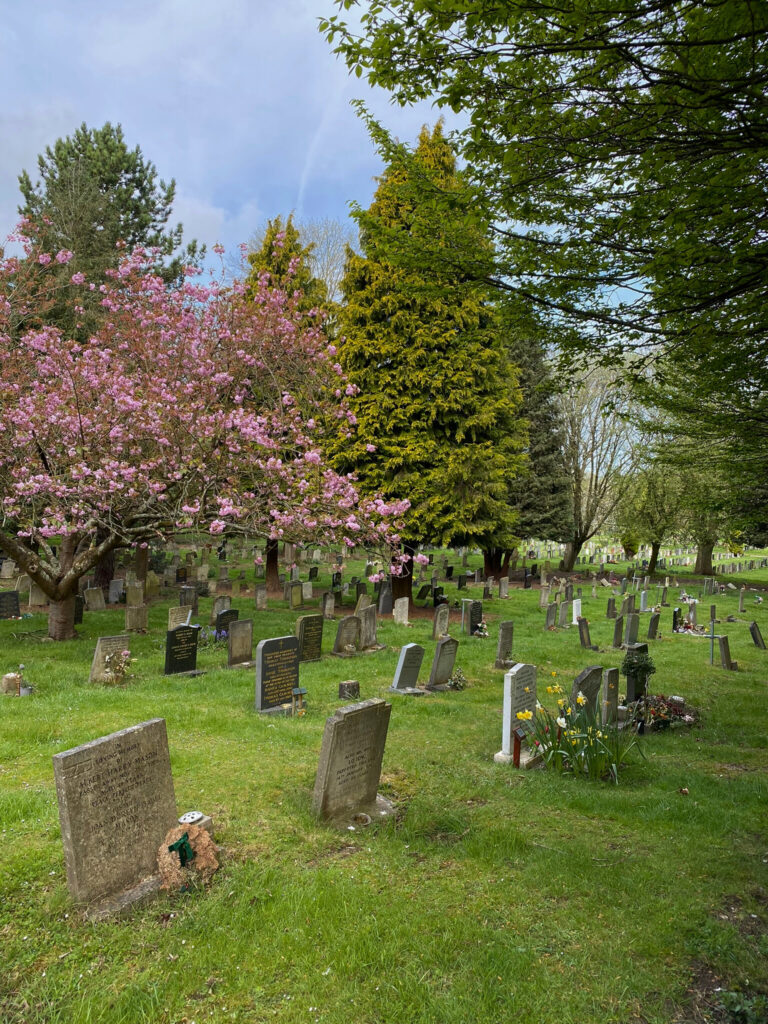
After the other two pallbearers had driven the hearse away and J had set up the donation box, there was nothing else but to wait for the funeral ceremony to be done. I talked to J and C about their careers and about the general process of funeral directing. A lot of interesting, sometimes sad (and sometimes hilarious) stories ensued.
I also impressed them with how much knowledge I already had – I’ll allow myself to be smug for a moment. What I didn’t know about was the chimney. I mentioned that it was always eerie to see the steam rising from it, and asked how they could do that without it being a public health risk. They explained that the stack only ever emits water vapour, and I asked how all the other stuff was filtered out. J decided we’d go to the office next-door and ask if they’d let me go back and see the cremator itself.
The Crematorium
There was a man and woman working in the office who greeted me warmly when J explained why I was with him. They immediately agreed to let me go out back – very exciting!
After momentarily being distracted by the beautiful cremains jewellery, the man (O) took me and C through the back doors. The machine was huge, way bigger than I expected. It had the obvious input section for the casket, and a collection point for the ashes. But around this, there was an enormous box with extra pipes and things snaking away into the ceiling. O explained that it was a £1,000,000+ filtration system to take out all the harmful bits before the neutral steam is released. By law, you can’t emit gaseous human remains into the atmosphere, which I think is quite sensible.
He also described so much about the operating of the machine. Apparently, it has to be decommissioned for a whole day when it needs maintenance! Some of it went over my head, as I’m not mechanically trained, but it was still a really interesting insight into ‘behind the scenes’.

© Facultatieve Technologies
There was a sign with the burning settings on it, which caught me off guard. Alongside the ones you’d expect like ‘light’, ‘medium’ and ‘heavy’ (taller and larger people take more time and heat, obv) was one simply labelled ‘infant’. I pointed it out and said it was the saddest thing I’d ever seen. O said those are always the most difficult ones to do, unsurprisingly.
I also got to see the cremulator, a machine used for the big bits left after the initial burning. There’s nearly always calcified bone that needs to be ground down into what we picture when we think of ‘ashes’. Essentially a big blender, the cremulator is the piece of kit that does this job.
It was such a great experience to be able to see the ‘back of house’ and understand more about how the cremation process continues post-funeral.
The Mourners Return
We were back outside by the time the family emerged from the chapel, and kept a respectful distance while they went to look at the flowers. C kindly dropped me off at home afterwards, which was helpful as the crem is in the middle of nowhere (also cool to arrive home in the shiniest black funeral car ever).
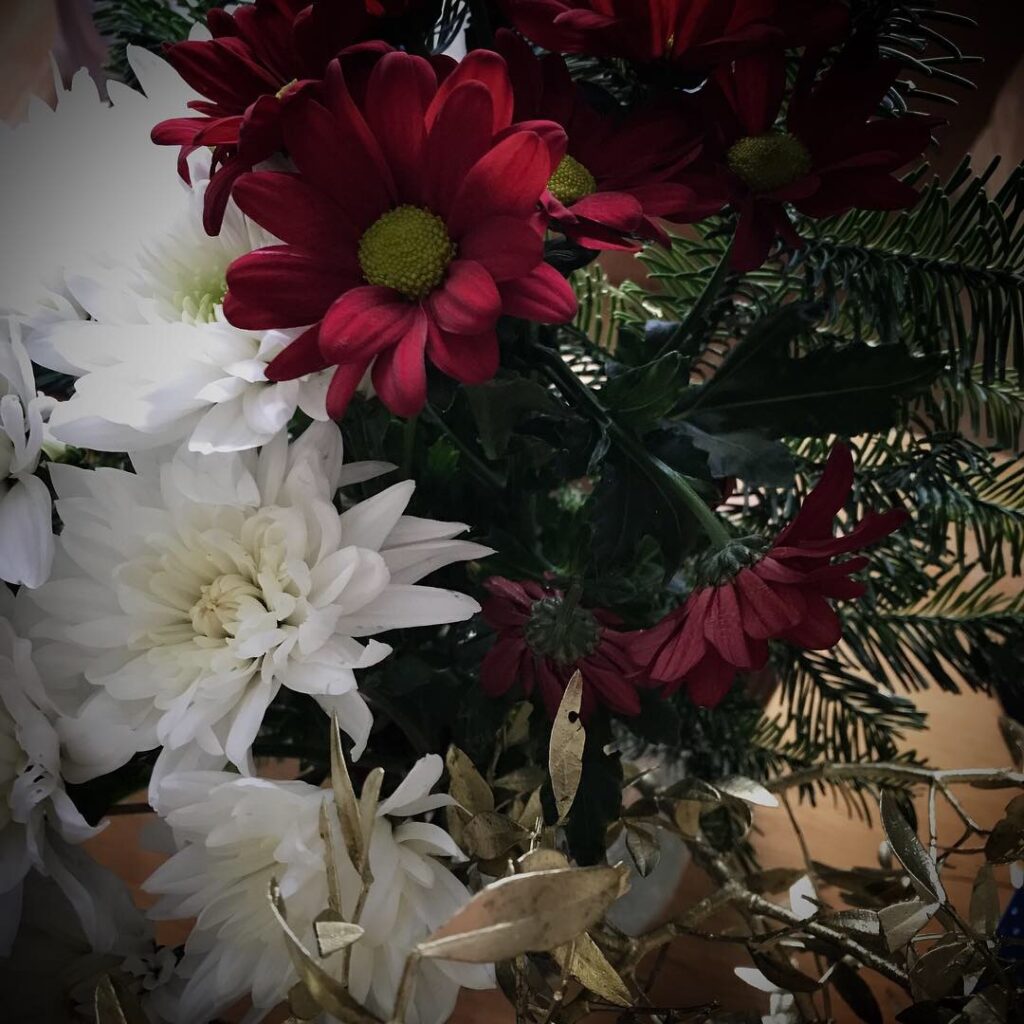
Funerals are old hat to me – as a mourner. However, I never thought I’d get to see the other side of it without actually working in the industry. I can’t believe how lucky I’ve been to see what I did that day, and I’m so excited to share this little peek into the professional side of funerals for you.
All my love to J and K for being nice enough to offer me the experience. It was also so cool to meet other people who were so accommodating and keen to show and teach me everything they could in the short time I had.
I’m so glad I agreed to go, and this has only made me keener to learn more about the industry and maybe work in it one day (hint, someone please hire me).

